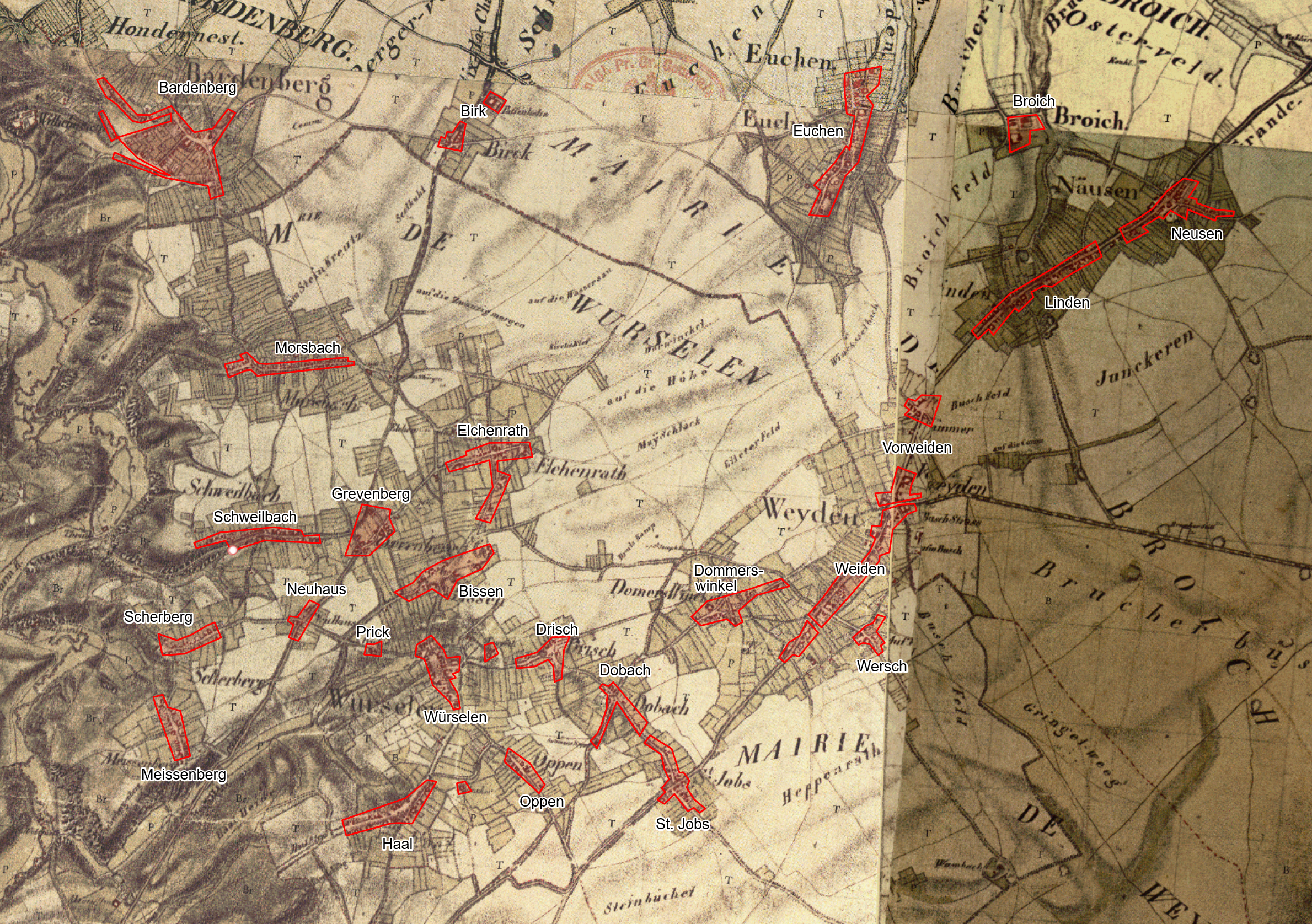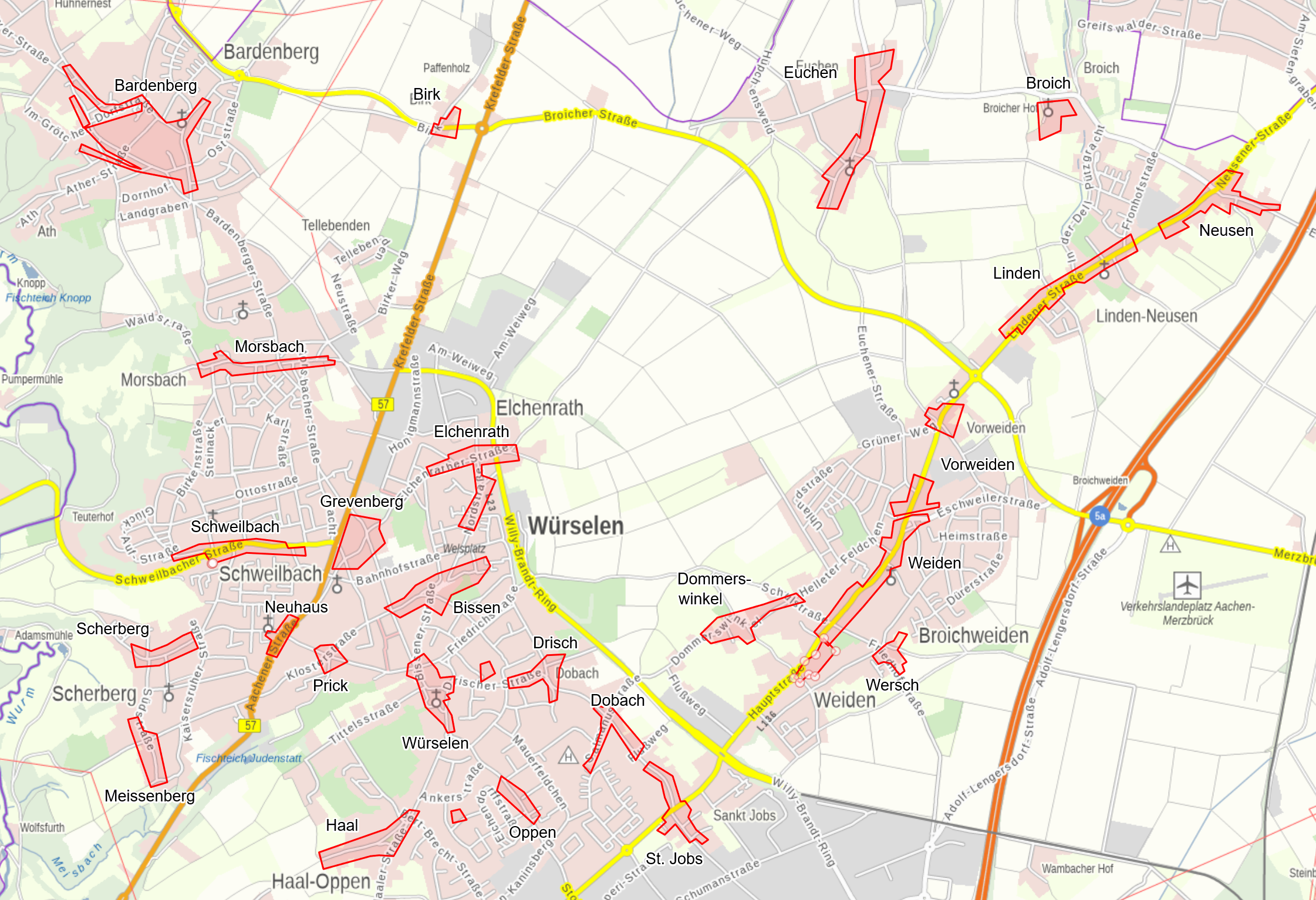The original villages
The Würselen around 1800 was only a spot with a few houses around the church of St. Sebastian. But St. Sebastian was what distinguished Würselen from all the other villages in the neighborhood. It was the ecclesiastical center. That is why today's Würselen grew out of this importance, which goes back to the chapel of the Wormsalt estate that already existed there in 870.
The figure below shows the visually created living spaces. For each village, this area encloses the recognizable area with houses.
Villages on the Tranchot map
highlighted by the areas drawn around the recognizable development
Tim-Online Projekt-Datei: "Tranchot Dörfer.json"
Route: "Tranchot Dörfer.gpx"
Click to enlarge![]()
The names of the villages – except for Meissenberg – are still alive today. In the tradition of the Jungenspiele, they have gained in importance again today.
The next figure shows the living spaces transferred to the WebAtlas Maps. Surfaces were moved so that they fit on this map.
Villages on the WebAtlas map
highlighted by the areas drawn around the recognizable developmentg
Tim-Online Projekt-Datei: "WebAltlas Dörfer.json"
Route: "WebAtlas Dörfer.gpx"
Click to enlarge![]()
Inhabitants
The number of inhabitants in the individual villages and their development in the first half of the 19th century is surprising in that Würselen is rather one of the smaller villages.
The table shows that, however, the number of inhabitants is increasing relatively strongly in all villages.
|
Dorf |
1801 |
1812 |
1826 |
1849 |
|
Birk |
k. A. |
k. A. |
k. A. |
k. A. |
|
Bissen |
165 |
247 |
278 |
322 |
|
Broich |
k. A. |
k. A. |
k. A. |
k. A. |
|
Dobach |
37 |
39 |
37 |
66 |
|
Drisch |
145 |
227 |
257 |
284 |
|
Elchenrath |
251 |
380 |
427 |
460 |
|
Grevenberg |
181 |
285 |
324 |
482 |
|
Haal |
193 |
275 |
321 |
409 |
|
Linden |
k. A. |
k. A. |
k. A. |
k. A. |
|
Morsbach |
427 |
688 |
686 |
1118 |
|
Neuhaus |
33 |
37 |
44 |
99 |
|
Neusen |
k. A. |
k. A. |
k. A. |
k. A. |
|
Oppen |
71 |
110 |
129 |
176 |
|
Prick |
28 |
22 |
28 |
k. A. |
|
Scherberg |
316 |
403 |
405 |
662 |
|
Schweilbach |
312 |
413 |
460 |
607 |
|
Weiden |
k. A. |
k. A. |
k. A. |
k. A. |
|
Wersch |
k. A. |
k. A. |
k. A. |
k. A. |
|
Würselen |
192 |
298 |
326 |
391 |
Population in the villages
Source: G. Welper: „Scherberg – Schweilbach, Ortsentwicklung in Würselen“, Schriftenreihe Kulturarchiv Würselen Band 2, ISBN 978-3-942513-19-7, 2013



